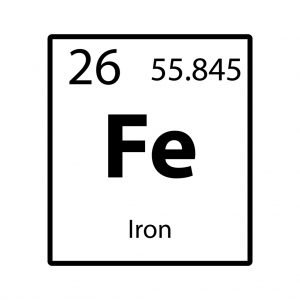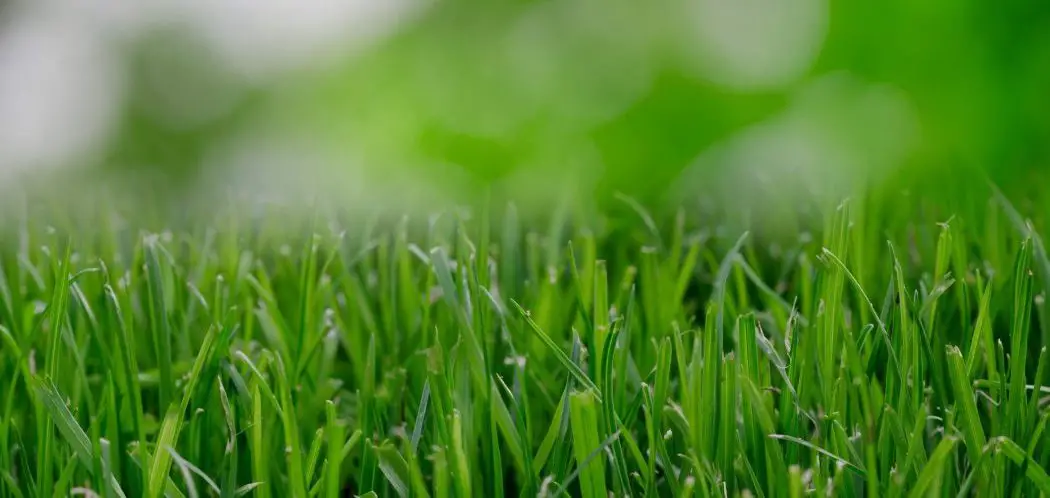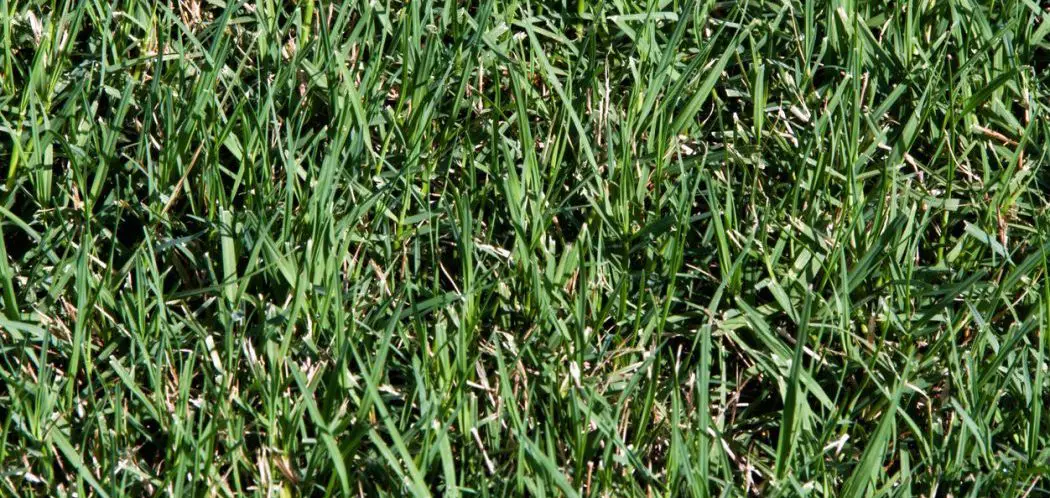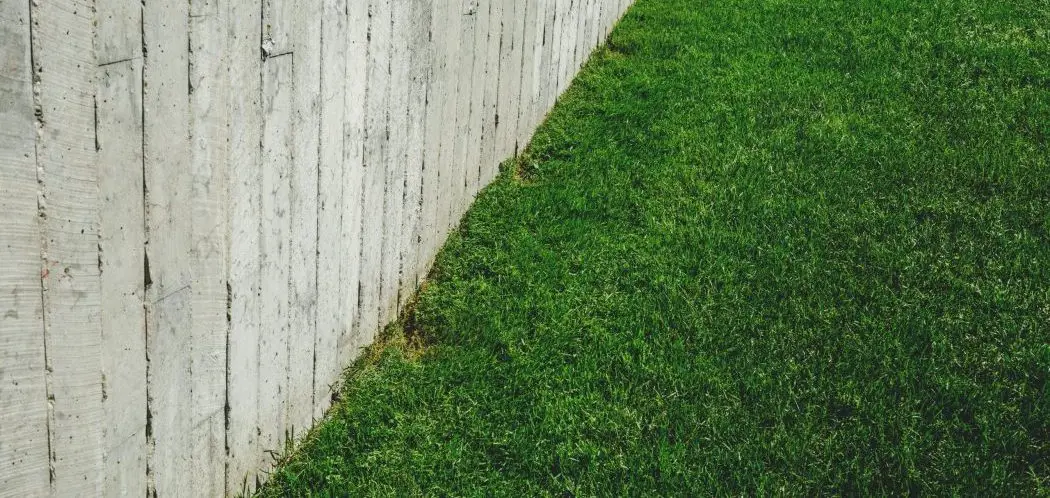Iron is an important micronutrient for your lawn because it helps the grass make chlorophyll which is a critical part in the process of photosynthesis.
The chlorophyll is what gives your grass its green color. Without it, the grass will turn yellow and can develop a condition called iron chlorosis.
Grass that doesn’t get enough light can suffer from this condition and the best way to diagnose it is to look at the grass and the surroundings.
People often wonder if their lawn would benefit from iron and that’s what we’re going to answer here.
Continue reading to learn all about the connection between iron and your lawn.
Benefits of Using Iron on Your Lawn
One of the primary reasons that people use iron is that it helps give your lawn that deep green color.
Iron is really quickly taken up by the leaf of your grass plant and it can make your lawn look a little more blue in color.
If you like your emerald green lawn, just stick with your regular nitrogen fertiliser but if you want to achieve a dark blue-green look that sets you apart from the rest, you might want to consider using iron as a supplement to your regular fertilizing programme.
Although iron doesn’t stimulate additional growth, it’s great for getting rid of those lighter patches in your lawn to achieve a more consistent look.

Another benefit of using iron on your lawn is that it can help to protect your grass from disease.
It makes the grass stronger by hardening it. It can also help to kill moss, which might take nutrients from the grass.
Iron can also help to reduce the pH levels in your soil and help the grass to handle frost better and during the winter when nutrients may not be able to get to the roots of the grass.
Lawn Iron Deficiency Symptoms
You may find patches of grass that are in the shade that are yellow. This happens when the grass isn’t able to get the iron it needs.
You don’t need to know a lot about a lawn to know that having lush green grass is a sign of a healthy lawn. Anytime you see your lawn changing color, you intuitively know that something is wrong, so you will want to determine what it is and how to take care of it.
When grass is in the shade or near trees and other plants, it can have trouble getting enough iron.
The grass has to compete with the trees and other plants for nutrients, and it needs the iron so that it can make chlorophyll, which is critical for photosynthesis. Without the chlorophyll, the grass loses its green color, which is why the leaves turn yellow.
How Much Iron to Use on the Lawn
If your grass doesn’t have enough iron, it can turn yellow or white in color.
On the other hand, if it gets too much, the grass can turn brown, dark gray or even black.
It’s important to use the right amount of iron so that your grass can get that lush green color you’re looking for.
If your lawn is suffering from iron chlorosis, it likely has a serious iron deficiency.
In this case, you should add between 0.7 and 1.4 ounces for every 1,000 feet.
Make sure that you stay within the range that is safe and will add iron without harming your grass.
If you are using a liquid iron product, there’s no need to water it in. Just spray it on top and let it do its magic.
Can Too Much Iron Hurt Your Lawn?
Too much iron can asbolutely hurt your lawn and ruin it’s appearance making hot critical than you apply it correctly.
High concentrations of iron can kill weeds and moss, but if the concentration is too high, it can burn your grass.

Be careful you don’t overdo it!
Follow the instructions on the label of the product your are using to the letter.
If you do end up using too much iron, you may need to replace some of the grass. Use a rake to rake up any of the dead grass.
You want to try and provide good access to water so that the new grass will thrive.
You can either add in sod or seed the area, depending on your preference.
Sod is ready-made pallets of grass that you need to care for until they take root. If you plant seed, you will need to wait for the grass to take root and grow. If it is a small area that you need to replace, seed will work just fine. However, if you have large empty patches, you may want to consider sod.
When to Apply Iron to a Lawn
You can apply iron to you lawn right after mowing. If you wan to mow right after application, you should wait several hours before doing so.
You should try to make sure that the temperatures outdoors are in the 60s and 70s.
Make sure you follow the instructions that come with the iron you buy.
Normally, grass doesn’t need a lot of iron. It gets what it needs from the soil but if you do notice your grass having lighter patches, it might be worth your consideration.
You can also test your soil to make sure that it has enough iron in it.
The iron enhancement will only last for about 7 days but can certainly be used to give your grass a boost when you want to show off! Apply the iron 6 days before you want your lawn looking it’s best.
How Often Should You Apply Liquid Iron to Your Lawn?
We reccommend applying liquid iron about every 2-3 weeks. There’s not really any need to apply it more frequently than that.
Should I Use Liquid or Granular Iron on My Lawn?
You can get iron in liquid or granular form, and you might be wondering which is the best to use.
Liquid iron is a concentrate of liquid that has iron in it, and you add it to your lawn when you water it.
Granular iron is dry pellets, and you scatter it in the yard.
The granular form is a slower release, whereas the liquid form helps the grass right away.
The liquid version will start showing you a difference within hours. However, the trade off is that it will only last a few weeks.
The granular version is slow-release and will last over an extended period of time.
If you are looking to control moss with the iron, the granular iron is more effective.
The liquid may turn the moss black, but it doesn’t always eliminate it.
Another major difference is that the liquid iron is easier to control and is less likely to lead to burning. The granular form can burn the grass if you use too much.
You can use either product; look at your situation and choose the one that is ideal for your lawn.








